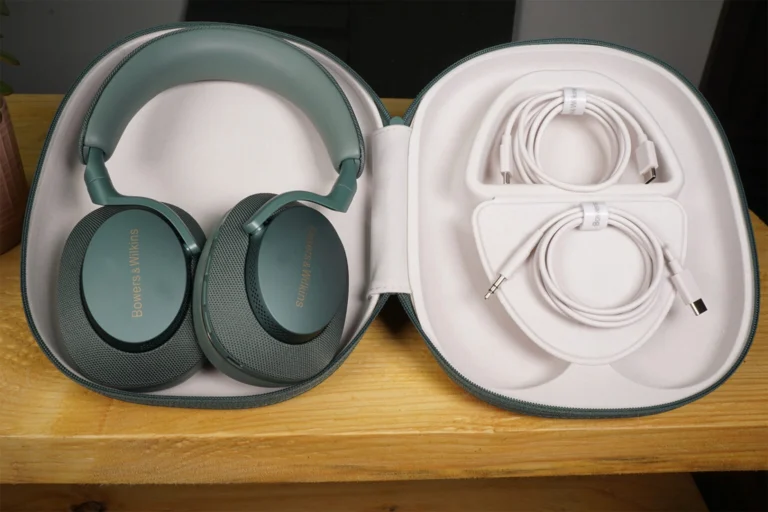Kanto’s YU4 Active Speakers: A Better Desktop Audio Experience
Kanto’s YU4 Active Speakers: A Better Desktop Audio Experience introduction
I spend a lot of time creating and consuming material while seated at my workstation as a photographer. My desk is cluttered with a supportive chair, expensive monitors, and various accessories. All to make that time more productive, comfortable, and easy. Speakers are one area that many people either ignore or simply ignore. High-quality speakers will enhance the experience and caliber of your work, whether you’re editing your next large video project or listening to music while working.
I experimented with a midsize set of speakers manufactured by the Canadian company Kanto in an effort to enhance the audio experience at my desktop. The Kanto YU4 speakers are ideal for desktop use because of their compact size and integrated amplifier.

When you first encounter the Kanto YU4, the distinctive design and polish are what immediately catch your attention. A cursory Google search for speakers will reveal that the audio industry is largely gray and black. As you can see from my previous evaluations, I adore aesthetically pleasing products, but I would never buy a product based only on its color and design. In addition to a variety of vivid colors, Kanto’s speakers also come in matte or gloss black and white options. Even a new Bamboo finish made from actual bamboo wood was just debuted.
Because of the design’s pleasant rounded corners, the actual 5.5″ x 7.5″ x 9″ measurements appear smaller on a desk. These have been shaped around the driver and domed tweeters in place of conventional speaker grills, giving them a far more aesthetically pleasing appearance. I’m going to get a pair of the larger YU6s in matte white to match my custom matte white PC case for my studio office because I think they look so good.

These are an unusual desktop speaker option, but it’s not just their color and appearance. You don’t need to find space for an extra stereo amplifier next to your desk because these active speakers have an amplifier integrated right in. This, in my opinion, is one of the main causes of people’s inability to get a good desktop sound setup. Perhaps, like me, you have multiple monitors and accessories that take up desktop space, or you only use a laptop and think a large system is excessive. Active speakers are ideal for small locations like a desktop because they combine the quality and power of passive speakers with an amplifier in a smaller compact.

Each of the 140 watt YU4s contains a 1″ silk dome tweeter and a 4″ Kevlar driver with a frequency response of 60 Hz. A typical passive speaker is one of the two speakers, and the active speaker is the other. The fronts are nearly the same, with a power button and volume knob on the right and a tiny LED and infrared receiver for the active speaker in the lower left corner that can be used with the accompanying remote control.

You can observe how different these two speakers are just looking at their backs. Only the left and right posts are available for connecting the speaker wire from the active speaker to the passive speaker. One excellent aspect of these is that they accommodate banana clips. All of the built-in amplifier’s inputs and controls are located in the active speaker. You may connect any and all of your gadgets in a number of ways thanks to the five incredible inputs. In addition to two digital optical inputs, there are two analog inputs: a 3.5mm mini-jack AUX and an RCA L/R.
The fifth input, a Bluetooth receiver with Qualcomm® aptXTM, is arguably the feature I utilized the most. A phono line switch for the RCA input is also located on the rear. If you wish to connect a turntable and enjoy the sound of vinyl, this is fantastic. Additionally, there is a USB connector, however it is just used to power your devices, despite having a built-in DAC for the digital inputs. Many PC users would have appreciated the feature, and I hope it will be included in a future release.

I used the optical input to connect these to my PC and alternated between a $200 desktop setup and a $500 pair of reference monitors that I had borrowed from a friend’s recording studio in order to test them out. I used each one for a month while I watched YouTube videos, listened to podcasts or music, edited sound for videos, and occasionally took Netflix breaks.
Despite having a linked subwoofer and being of comparable wattage, I immediately realized that the Kantos were far superior to the desktop setup’s smaller speakers. Although this was almost to be expected, I found that the Kantos’ excellent stereo image was what really made them stand out. The perceived position of sound sources is known as stereo imaging. If you intend to utilize these speakers for any kind of video editing, this is crucial.
In order to place their speakers in the best possible position for the listener, sound professionals take great care when setting them up. However, I didn’t do anything particularly noteworthy when I was setting up the speakers; in fact, given my limited space, I probably placed them in poor positions in relation to where I sit at my computer. Despite this, I was still astounded by the stereo imaging and depth in comparison to the other speakers.

Similar to the reference monitors, they both provided a pleasing linear or flat sound, which is another ideal quality for any audio editing task. For me, the Phantom Center was the most significant distinction between the more costly monitors and the Kantos. This effect persisted regardless of how I positioned the Kantos, and it significantly improved my everyday computer use.
The sound simply appears to be coming from a speaker positioned in the middle of my monitor, which is the only way I can explain this phenomenon. With many speakers, the amount of sound you hear varies based on your position in proximity to the speakers. From that phantom center speaker, the Kantos always felt so well-balanced.

The reference monitors may be necessary or preferred if you work as a full-time video editor or record a lot of audio. I couldn’t hear any benefit over the YU4s, though, as a photographer who occasionally edits my own video projects. The main thing I didn’t like about the 4″ woofers was that they didn’t have enough low end.
With their excellent midrange and crystal-clear highs, the sound has a lot of presence, and I have no doubt that many individuals would be more than content with them alone. However, I’m accustomed to hearing nice low-end because every audio system I own has a subwoofer. Fortunately, for those like myself who prefer a subwoofer, there is one available on the speakers.
After I contacted Kanto, they sent me a SUB6 200-watt 6″ subwoofer to use in conjunction with the speakers. The sub is a little more expensive at $240 than the speakers, but when you combine the two, the sound is significantly richer. When the crossover is properly adjusted, the SUB6 works in perfect harmony with the Yu 4’s, which helps to support the 4″ midrange woofers. The SUB6 has the same high-quality construction and stylish design as the YU4, but you can use any subwoofer with them. Therefore, it will also look good if you decide to place it on your desktop.

All of the equipment required to set up the YU4s are included in the package. A remote control, as previously indicated, speaker wire, a power cable, an AUX cable, and some felt discs for the bottom. Since most active speakers do not come with a remote control, this is a very useful function. If you have inputs set up on your desk or even as a sound system for your studio, this provides a simple way to switch between them.
You can adjust the bass and treble with the remote control if you want a more rich, less flat sound. Most notably, you may skip, pause, and progress music using the Bluetooth interface. These speakers are also a fantastic substitute for sound bars on a home theater system because of the remote control. Most universal learning remote controls may be used to adjust the volume, and most TVs have an optical out for optimal sound quality.
What I Like
- Color options
- Variety of inputs
- Bluetooth receiver
- Remote control
- Sub output
What I Don’t Like
- No USB input
- Attracts fingerprints
- Might need a subwoofer depending on your preferences

Final Thoughts
Although the YU4s are about as large as I would want for desktop speakers, their dual optical and Bluetooth input options, accessible sub-out, and assortment of attractive finishes make them well worth the $299 price tag. Kanto also produces a smaller version of the YU2s with nearly all the same functionality but fewer inputs if the size and cost are a bit too much for you. These would be ideal for you because they are only $200 and have a considerably smaller footprint.
Purchasing larger speakers is the only option if you just must have more sound. The minor boost in mid- and low-end sound quality isn’t worth the larger size on my desktop, in my opinion. Kanto provides a larger set of YU6 speakers if you don’t care about speaker size. For about $389, they provide a 5.25″ Kevlar driver with all the same features as the YU4s.






